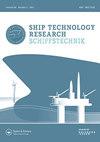Updated and expanded casualty analysis of container vessels
IF 0.9
Q3 ENGINEERING, MARINE
引用次数: 2
Abstract
ABSTRACT Historical information is the key input for risk analysis with respect to developing the risk model as well as in the risk management process, i.e. identification of effective risk mitigating measures. Casualty databases are today still the primary source of this information on accidents and incidents. Accident investigation reports provide more detailed information on the accident scenario and facilitating improved risk analysis. Casualty information by IMO GISIS, IHS Markit and LMIU for the period 1990–2020 and containerships of more than 999 GT had been re-analyzed and information categorized for allowing statistical analysis of causes. A taxonomy had been developed for the consistent categorization of information and used to present accident causes in a more structured way. Appropriate statistics regarding the main causes for major types considering collision, contact, grounding, fire, explosion and failure of machinery equipment are presented in this paper. Historical trends and quantitative casualty characteristics are reported.更新和扩大集装箱船伤亡分析
摘要历史信息是风险分析的关键输入,涉及开发风险模型以及风险管理过程,即确定有效的风险缓解措施。伤亡数据库今天仍然是这些事故和事件信息的主要来源。事故调查报告提供了有关事故情景的更详细信息,并有助于改进风险分析。对IMO GISIS、IHS Markit和LMIU在1990-2020年期间以及超过999 GT的集装箱船的伤亡信息进行了重新分析,并对信息进行了分类,以便对原因进行统计分析。已经制定了一个分类法,用于对信息进行一致的分类,并用于以更结构化的方式呈现事故原因。本文对碰撞、接触、接地、火灾、爆炸和机械设备故障等主要类型的主要原因进行了适当的统计。报告了历史趋势和伤亡数量特征。
本文章由计算机程序翻译,如有差异,请以英文原文为准。
求助全文
约1分钟内获得全文
求助全文

 求助内容:
求助内容: 应助结果提醒方式:
应助结果提醒方式:


